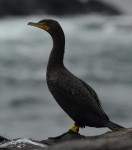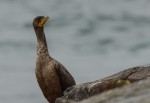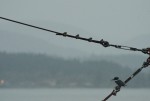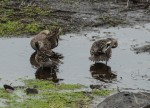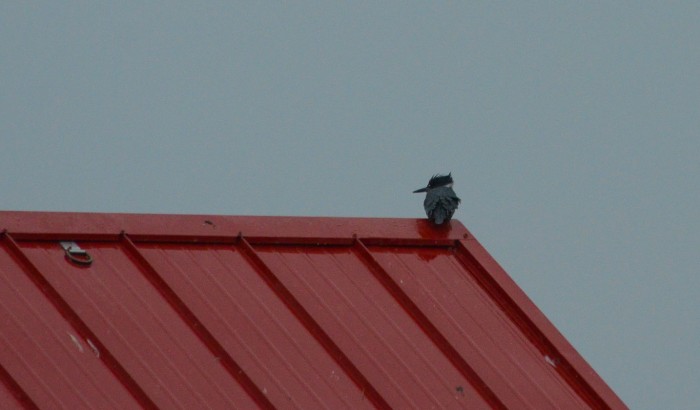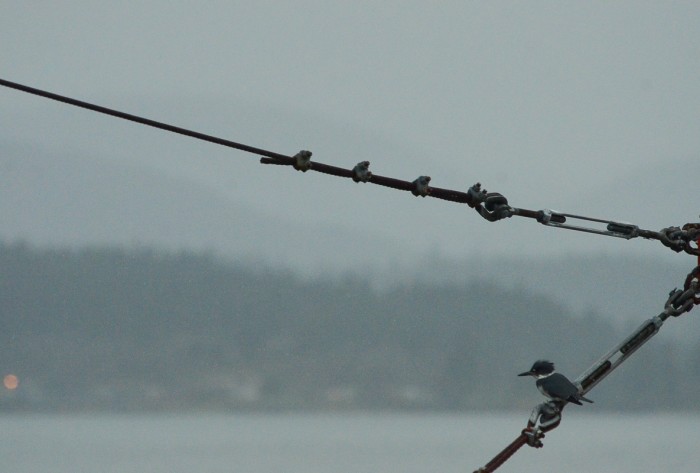- kingfisher in the morning
- bald eagles on West Rock
- cormorant landing
- cormorants on east side of great race
- Banded cormorant KCO- (See note below)
- Double Crested cormorant
- Brant’s cormorants
- Brant’s cormorants
- Cormorants “stare down?” a tanker
- These tanker images join our gallery of such risks
Atmospheric pressure rose to a high of over 1020 h Pa today. The NE wind has started to return, 10 to 20 knots most of the day.
One whale watching boat and one dive boat in reserve today.
Thursday the weather/visibility was pretty bad for a census and on Friday I went off island so I did a makeup census on Saturday.
Notably: there was a high count of cormorants, 520, compared to last week as well a yellow banded individual (KCO)- details documented on next post. There was a high number of bald eagles (20) in reserve, and a lone kingfisher and pelican again in the reserve. While there have been over 40 black oyster catchers here this week there were none observed today.
Harvested driftwood including a good size fir log I tied up at high tide and bucked and chopped once the tide had fallen. Worked on toilet install and hammer drilling for plaque install.
Census:
California Sea lions: 38
Northern Sea Lions: 222
Harbour Seals: 5
Elephant Seals: 6
Cormorants: 520
Canada Geese: 2
Gulls: 680 mostly Thayer’s)
Bald Eagle: 20
Harlequin Ducks: 5
Black Turnstone: 2
Dunlin: 3
Sparrow: 0
Kingfisher: 1
Pelican:1





